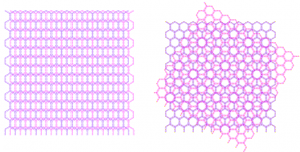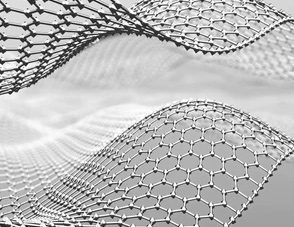Friction between moving parts and the associated wear are responsible for about 25% of the world’s energy consumption. Superlubricity is a new mechanism of ultralow friction between solid surfaces, achieved with 2D materials such as graphene. When these atomic layers are in incommensurate alignment (see Fig. 1 below), the atomic forces balance, and the friction coefficient drops to ultralow values. In this project, we want to bring superlubricity to the macroscopic scale using particles coated with superlubric 2D material. We will measure their resistance to shear (rheology), and investigate the underlying microscopic contacts between the 2D materials using 3D confocal microscopy. This technique allows tracking the individual particles during applied deformation to reconstruct their flow fields. To image the contact network, we will explore the natural fluorescence of the 2D materials, which becomes quenched when 2D material layers are in contact. These microscopic observations complementing the macroscopic mechanical measurements should give unique insight into the micromechanics of ultralow-friction lubricants.
Supervisor: Prof. Dr. P. Schall
Daily supervisor: Abhishek Gupta

Fig. 1 Schematic of two graphene layers on top of each other in commensurate (left) and incommensurate atomic lattice alignment (right)
